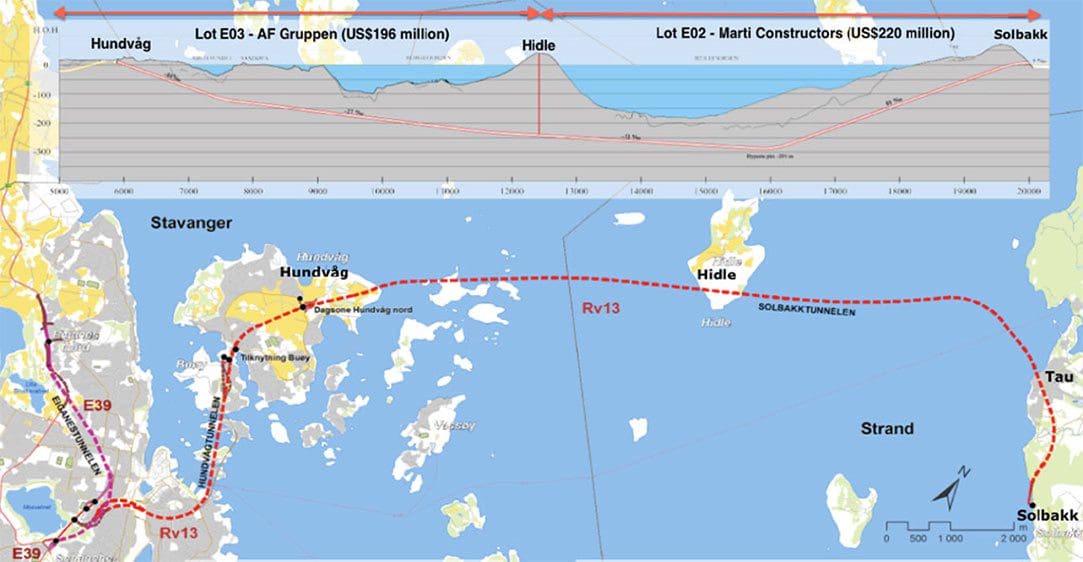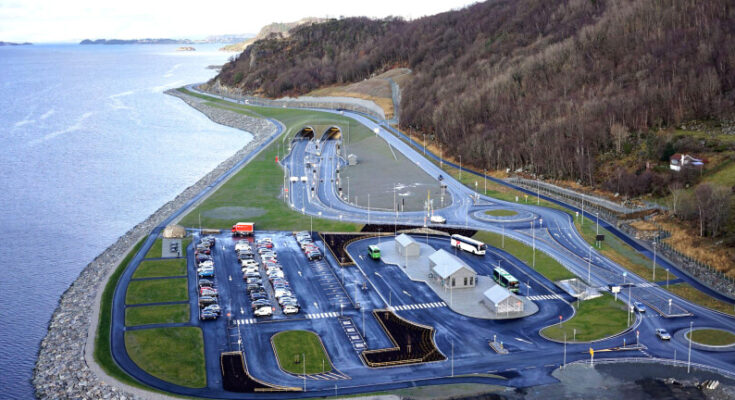Norway is renowned for its breathtaking landscapes, including deep fjords, towering mountains, and intricate waterways. However, one of its most remarkable engineering feats lies beneath the surface: the Ryfylke Tunnel. As the longest and deepest underwater road tunnel in the world, it stands as a testament to modern engineering, revolutionizing travel in the region.
A Record-Breaking Tunnel

The Ryfylke Tunnel is part of the larger Ryfast tunnel system, a massive infrastructure project designed to improve connectivity between the city of Stavanger and the district of Ryfylke. This tunnel alone stretches 14.4 kilometers (8.9 miles), making it the longest subsea tunnel built for road traffic. Additionally, it reaches an incredible depth of 292 meters (958 feet) below sea level, making it the deepest of its kind.

Before the Ryfylke Tunnel, people traveling between Stavanger and Ryfylke relied on ferries, which could be time-consuming and subject to weather conditions. With the opening of this tunnel, travel times have been drastically reduced, allowing for a more efficient and reliable connection.
Engineering Challenges and Construction
Building a tunnel of this scale beneath the seabed was no easy task. The construction of the Ryfast tunnel system, which includes the Ryfylke Tunnel and two other tunnels, began in 2013 and took six years to complete. The entire project was officially opened to traffic on December 30, 2019.

One of the greatest challenges faced by engineers was digging and reinforcing a tunnel at such an extreme depth. The pressure at nearly 300 meters below sea level is immense, requiring special materials and construction techniques to ensure safety and durability. Advanced ventilation and drainage systems were installed to keep the tunnel safe for drivers, while a sophisticated lighting system helps maintain visibility and reduce driver fatigue.
Transforming Transportation in Norway
The completion of the Ryfylke Tunnel has had a profound impact on transportation and daily life in the region. Previously, the journey from Stavanger to Ryfylke required a ferry ride that could take over an hour, depending on wait times. Now, travelers can drive through the tunnel in just 10 minutes, greatly improving efficiency for commuters, businesses, and tourists.
The tunnel is also a key part of Norway’s commitment to sustainable infrastructure. By reducing the reliance on ferries, which consume fuel and contribute to emissions, the tunnel helps create a more eco-friendly transportation network. Additionally, the project supports economic growth by making it easier for businesses and industries in Ryfylke to access the larger market of Stavanger.
A Marvel of Modern Engineering
The Ryfylke Tunnel is more than just a transportation route—it is a symbol of Norway’s innovation and engineering expertise. The project showcases how technology and careful planning can overcome natural challenges, providing a solution that benefits both local residents and the broader economy.
As one of the most ambitious infrastructure projects in recent years, the tunnel is expected to serve as a model for future underwater tunnel construction worldwide. Whether you are a traveler exploring Norway’s scenic landscapes or an engineer fascinated by large-scale projects, the Ryfylke Tunnel stands as an awe-inspiring achievement beneath the waters of the North Sea.




